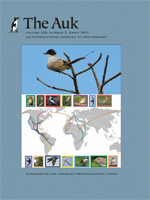This is a book about the complex relationships among policies that address the exploitation and conservation of key parts of the marine environment. It examines efforts to conserve albatrosses, one of the most threatened bird families on the planet, and one of the main causes of their situation—fisheries for tuna and other species. There has been a tendency over much of recent human existence to regard the planet's environment and the life that it supports as being here solely to support humans. In this view, harvesting should serve the short-term needs of the harvesters. The authors describe in detail the dawning realization of the threats to albatrosses, the underlying drivers on those threats, and the efforts to reduce them.
The first six chapters describe the essentials of the birds' biology and a history of human interaction with albatrosses, including efforts in the 20th century to conserve albatrosses at their colonies. The text has some black-and-white photographs, and there are a few pages of the same photographs in color. The seventh and eighth chapters cover the growth of the legal environment that affects human interactions with albatrosses. Chapter 9 surveys the world fishing industry briefly, leading into a series of chapters concerning fisheries and fisheries management.
The book describes the change from net fishing to longline fishing that occurred in the 1980s, driven partly by a ban on high-seas drift nets, but also by the usefulness of lines in harvesting new target species. This change brought with it higher rates of bycatch of albatrosses (and some other species) that took a decade or so to be noticed in terms of albatross population trajectories. The techniques to reduce this bycatch are remarkably simple in concept (described in one chapter), but the challenge is to ensure their implementation, particularly when an individual fisher may only see a very occasional bycatch and the techniques may add, very marginally, to the complexity of the fishing operation. Most regulatory structures for fishing are dominated by the interests of the harvesters. This applies both nationally and internationally, and when those structures are inadequate to ensure that overharvesting does not occur on the target fish stocks, what hope is there for a bycatch species?
The authors provide a history of the work that has gone into attempting to change this situation, including that of the individual scientists who noticed the problems originally and the work of non-governmental and some governmental organizations. The book finishes with the establishment of the Agreement on the Conservation of Albatrosses and Petrels (ACAP) and the first years as that agreement began to be implemented. The authors are ultimately hopeful that the combined efforts of all of the players, including those engaged in ACAP work, will be successful, but they note that this is by no means a foregone conclusion.
This is one of the best books I have read on the complexities of human interactions that underpin nature conservation. There are 50 pages of appendices and supporting material. Although well researched, the book is perhaps a little biased in its sources toward the English-speaking conservation part of the global community. It would have been interesting to understand and explore more of the Latin American or east Asian attitudes to the problems besetting the albatrosses and the related issue of harvesting the sea's resources. There are some places where I understood issues differently but, as with all history, there is much that is personal interpretation. I recommend the book to anyone who wishes to understand the history of albatross conservation—and I look forward with hope to a successful outcome for the efforts documented here.





